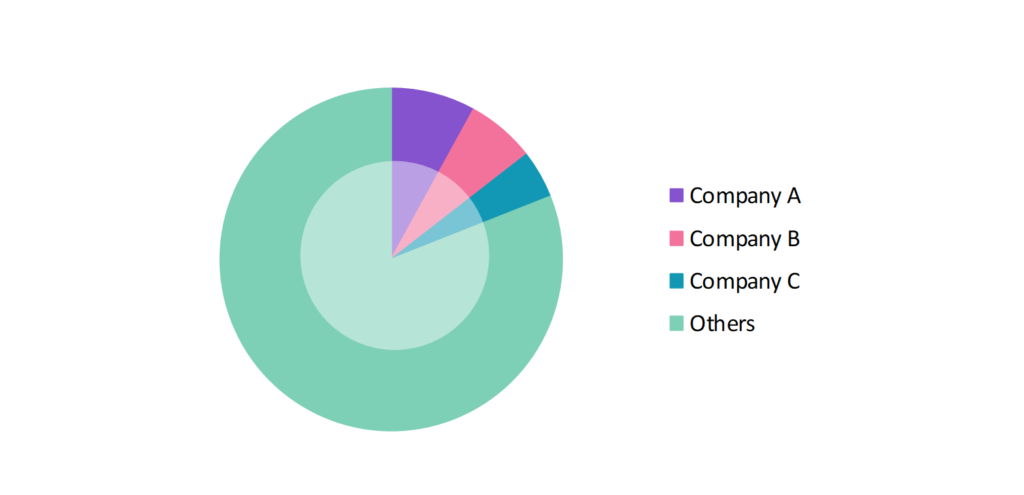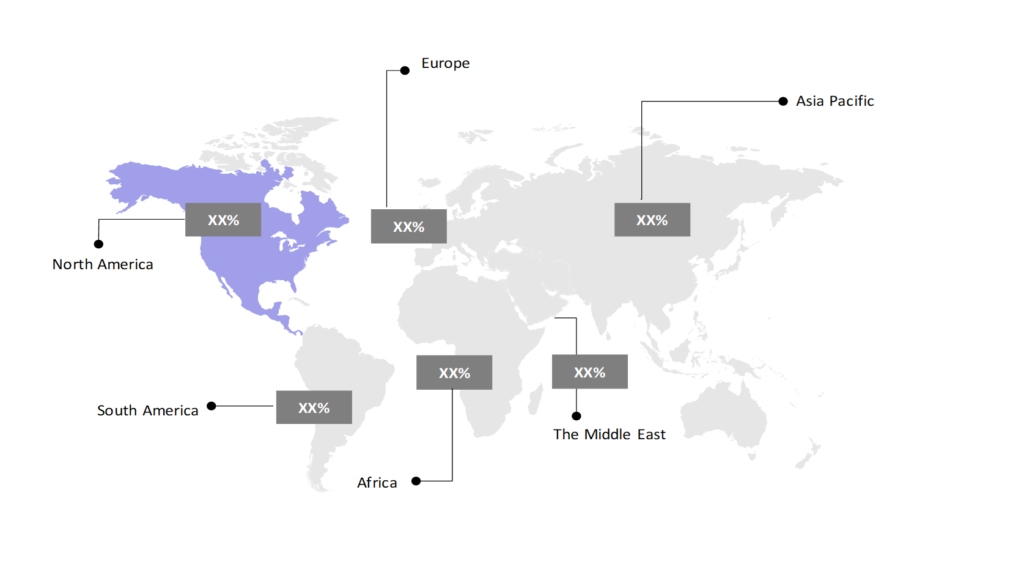Disaster Recovery as a Service (DRaaS) Market Analysis: Growth, Size, Share & Future Trends (2024-2029)
The market report offers a detailed analysis segmented by Service Type (Backup and Recovery, Real-Time Replication, Data Protection, Professional Services); by Vertical (Financial Services and Insurance, Telecommunications, Government and Public Sector, Others); by Geography (North America, South America, Asia Pacific, Europe, The Middle East, Africa).
Outlook

- The disaster recovery as a service (DRaaS) market is estimated to be at USD 17,933.11 Mn in 2025 and is anticipated to reach USD 37,211.33 Mn in 2030.
- The disaster recovery as a service (DRaaS) market is registering a CAGR of 15.72% during the forecast period 2025-2030.
- The Disaster Recovery as a Service (DRaaS) market is growing steadily, driven by the rising need for data protection and increasing cyber threats. As more businesses embrace cloud infrastructure, the demand for effective disaster recovery solutions continues to grow, fueling innovation in the sector.
Request a free sample.
Ecosystem

- The participants in the global disaster recovery as a service (DRaaS) industry are always developing their strategies to preserve a competitive advantage.
- These companies focus on acquisitions, research and development, data storage and security systems innovations, partnerships, and technological launches.
- Several important entities in the disaster recovery as a service (DRaaS) market include Microsoft Corp.; International Business Machines Corp.; Recovery Point Systems, Inc.; VMware, Inc.; Amazon.com, Inc.; and others.
Ask for customization.
Findings
| Attributes | Values |
|---|---|
| Historical Period | 2019-2023 |
| Base Year | 2024 |
| Forecast Period | 2025-2030 |
| Market Size (2025) | USD 17,933.11 Mn |
| Market Size (2030) | USD 37,211.33 Mn |
| Growth Rate | 15.72% CAGR from 2025 to 2030 |
| Key Segments | Service Type (Backup and Recovery, Real-Time Replication, Data Protection, Professional Services); Vertical (Financial Services and Insurance, Telecommunications, Government and Public Sector, Others); Geography (North America, South America, Asia Pacific, Europe, The Middle East, Africa) |
| Key Vendors | Microsoft Corp.; International Business Machines Corp.; Recovery Point Systems, Inc.; VMware, Inc.; Amazon.com, Inc. |
| Key Countries | The US; Canada; Mexico; Brazil; Argentina; Colombia; Chile; China; India; Japan; South Korea; The UK; Germany; Italy; France; Spain; Turkey; UAE; Saudi Arabia; Egypt; South Africa |
| Largest Market | North America |
Get a free quote.
Trends
- Shift Towards Multi-Cloud DRaaS Solutions: As businesses adopt multi-cloud strategies, there is an increasing emphasis on DRaaS providers offering solutions across different cloud platforms, such as AWS, Azure, and Google Cloud. This flexibility allows businesses to enhance disaster recovery strategies by minimizing dependencies on a single provider and improving system redundancy.
- Adoption of AI and Automation in Disaster Recovery: AI-driven automation in DRaaS is becoming more prominent, enabling faster and more accurate recovery processes. Automation tools are increasingly used to monitor, detect, and restore data following system failures or breaches, reducing manual intervention and downtime. Companies are also exploring AI for predictive analytics to prevent system failures proactively.
- Increasing Integration with Edge Computing: With an emphasis on edge computing, DRaaS providers optimize their services to support decentralized data processing at the network’s edge. This is particularly relevant in sectors like telecommunications and IoT, where real-time processing is critical. In 2023, Zerto introduced a DRaaS solution tailored for edge environments, enabling faster disaster recovery in remote and latency-sensitive areas.
Speak to analyst.
Catalysts
- Growing Demand for Automated Disaster Recovery Planning: The growing demand for automated disaster recovery planning is a significant market driver as organizations seek to streamline recovery processes and reduce downtime. Automation enhances efficiency by minimizing manual interventions and ensuring quicker responses to disruptions. Automated solutions become essential for effective disaster recovery management as businesses prioritize resilience and business continuity.
- Increased Need for Data Security and Scalability: The increasing demand for robust data security and scalable solutions has significantly fueled growth in the disaster recovery-as-a-service (DRaaS) market. As businesses confront rising cyber threats and stringent regulatory requirements, they invest in DRaaS to protect sensitive data and ensure quick scalability. This heightened focus on security and flexibility enhances business continuity and drives substantial market expansion, contributing to rising revenues as organizations seek reliable and adaptable solutions.
- Regulatory Compliance and Data Protection Laws: Increasing regulatory compliance and data protection laws are significant drivers for the DRaaS market. As organizations strive to meet stringent data privacy and security requirements, they increasingly invest in dependable disaster recovery solutions, resulting in significant market expansion. In 2022, healthcare organizations in the U.S. increasingly adopted DRaaS to comply with the Health Insurance Portability and Accountability Act’s (HIPAA) data recovery mandates, ensuring patient data security in case of breaches or failures.
Inquire before buying.
Restraints
- Data Privacy and Compliance Concerns: As DRaaS operates in cloud environments, ensuring data privacy and compliance with regional data protection regulations remains challenging. Businesses in the European Union need to comply with the General Data Protection Regulation (GDPR), which places strict guidelines on data handling, and companies using cloud-based DRaaS solutions must ensure data transfers are secure and compliant.
- Latency and Bandwidth Constraints: DRaaS is highly reliant on internet connectivity, and businesses in regions with poor infrastructure face challenges related to latency and bandwidth. These constraints result in slower recovery times, particularly for industries that handle large volumes of data, such as telecommunications.
- Vendor Lock-In and Limited Flexibility: Some DRaaS solutions may create vendor lock-in situations where businesses are tied to a specific provider due to integrating disaster recovery solutions with their cloud infrastructure. This lack of flexibility can be challenging, as companies may face difficulties when switching providers or scaling their recovery solutions across multi-cloud environments.
Personalize this research.
Hotspot

Explore purchase options.
Table of Contents
| 1. Introduction 1.1. Research Methodology 1.2. Scope of the Study 2. Market Overview / Executive Summary 2.1. Global Disaster Recovery as a Service (DRaaS) Market (2019 – 2023) 2.2. Global Disaster Recovery as a Service (DRaaS) Market (2024 – 2030) 3. Market Segmentation 3.1. Global Disaster Recovery as a Service (DRaaS) Market by Service Type 3.1.1. Backup and Recovery 3.1.2. Real-Time Replication 3.1.3. Data Protection 3.1.4. Professional Services 3.2. Global Disaster Recovery as a Service (DRaaS) Market by Vertical 3.2.1. Financial Services and Insurance 3.2.2. Telecommunications 3.2.3. Government and Public Sector 3.2.4. Others 4. Regional Segmentation 4.1. North America 4.1.1. The US 4.1.2. Canada 4.1.3. Mexico 4.2. South America 4.2.1. Brazil 4.2.2. Argentina 4.2.3. Chile 4.2.4. Rest of South America 4.3. Asia Pacific 4.3.1. China 4.3.2. India 4.3.3. Japan 4.3.4. Rest of Asia Pacific 4.4. Europe 4.4.1. The UK 4.4.2. Germany 4.4.3. France 4.4.4. Rest of Europe 4.5. The Middle East 4.5.1. Saudi Arabia 4.5.2. UAE 4.5.3. Rest of the Middle East 4.6. Africa 4.6.1. South Africa 4.6.2. Nigeria 4.6.3. Rest of Africa 5. Value Chain Analysis of the Global Disaster Recovery as a Service (DRaaS) Market 6. Porter Five Forces Analysis 6.1. Threats of New Entrants 6.2. Threats of Substitutes 6.3. Bargaining Power of Buyers 6.4. Bargaining Power of Suppliers 6.5. Competition in the Industry 7. Trends, Drivers and Challenges Analysis 7.1. Market Trends 7.1.1. Market Trend 1 7.1.2. Market Trend 2 7.1.3. Market Trend 3 7.2. Market Drivers 7.2.1. Market Driver 1 7.2.2. Market Driver 2 7.2.3. Market Driver 3 7.3. Market Challenges 7.3.1. Market Challenge 1 7.3.2. Market Challenge 2 7.3.3. Market Challenge 3 8. Opportunities Analysis 8.1. Market Opportunity 1 8.2. Market Opportunity 2 8.3. Market Opportunity 3 9. Competitive Landscape 9.1. Microsoft Corp. 9.2. International Business Machines Corp. 9.3. Recovery Point Systems, Inc. 9.4. VMware, Inc. 9.5. Amazon.com, Inc. 9.6. Company 6 9.7. Company 7 9.8. Company 8 9.9. Company 9 9.10. Company 10 |
Know the research methodology.
Disaster Recovery as a Service (DRaaS) Market – FAQs
1. What is the current size of the disaster recovery as a service (DRaaS) market?
Ans. In 2025, the disaster recovery as a service (DRaaS) market size is USD 17,933.11 Mn.
2. Who are the major vendors in the disaster recovery as a service (DRaaS) market?
Ans. The major vendors in the disaster recovery as a service (DRaaS) market are Microsoft Corp.; International Business Machines Corp.; Recovery Point Systems, Inc.; VMware, Inc.; Amazon.com, Inc.
3. Which segments are covered under the disaster recovery as a service (DRaaS) market segments analysis?
Ans. The disaster recovery as a service (DRaaS) market report offers in-depth insights into Service Type, Vertical, and Geography.
